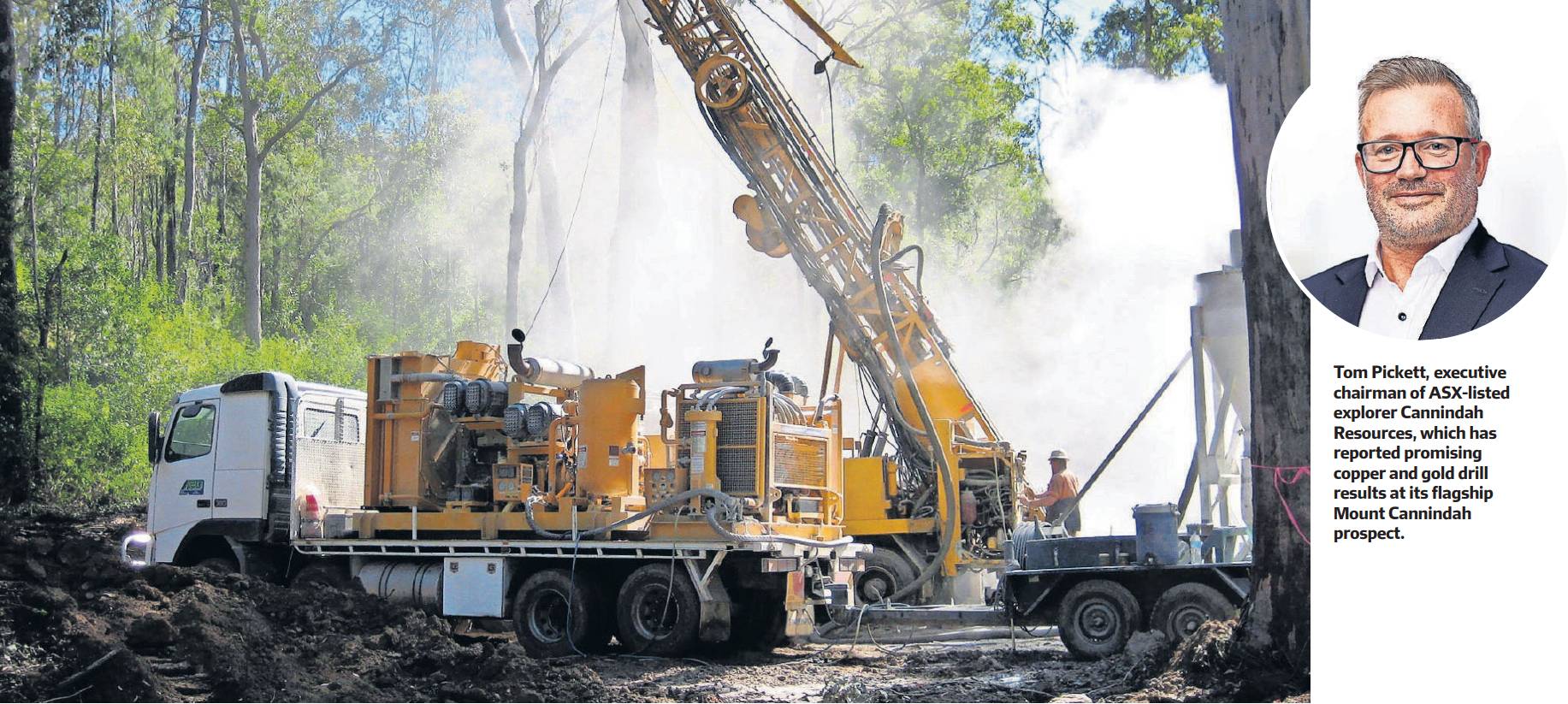Copper, gold underpin Cannindah push
Surging copper demand coupled with ebbing global production paints a worrying picture for consumers of the commonly used metal – and, if anything, copper’s role in the renewable energy transition will only exacerbate the likely shortages.
Energy analyst Wood Mackenzie and broker Goldman Sachs forecast an 8.1 million tonne supply gap by 2030, compared with a balanced supply-demand profile currently.
Put in context, the 2030 deficit is 30 per cent of forecast output of 26 million tonnes, which is expected to abate from 2025 peak levels of 27 million tonnes.
The acid test of availability is global inventories, which have fallen to critical levels of around 200,000 tonnes, compared with 900,000 tonnes five years ago.
In the meantime, the copper price hovers around $US4 ($6) a pound, below the record March 2022 peak of $US4.77/lb but still well above the historical average.
On the supply side, the copper squeeze results from a heady mix of declining grades at the big established mines and a dearth of new discoveries. On the demand side, there’s a new appreciation of copper’s role in electric vehicles, batteries and solar and wind power infrastructure.
Another eyebrow-raising number is that if the Paris Agreement goal of net zero emissions by 2050 is to be achieved, the world will need to spend $US23 billion on finding and developing new copper projects annually over the next decade.
The executive chairman of the ASX-listed advanced explorer Cannindah Resources, Tom Pickett, says that “staggering” estimate is 63 per cent higher than the actual annual average over the last three decades.
“That shows why the big miners such as Codelco and Newmont are hunting critical metals like copper at the moment,” he says.
Cannindah’s contribution to easing the copper squeeze is its flagship Mount Cannindah project in Queensland, 100 kilometres from the Port of Gladstone. Cannindah is leaving no rock unturned – literally – in realising the potential of the project, which was drilled extensively by the old Mount Isa Mines and Newcrest Mining.
To date, drilling has focused on the Mount Cannindah area of the sprawling tenement, which covers 71.5 square metres of exploration licences and 7.5 square metres of granted mining leases.
But the 19-hole diamond drilling effort suggests the mineralisation extends north and south at depth, significantly increasing the size of the known copper zones as well as identifying new gold zones.
Pickett says if the current exploration success continues, Mount Cannindah could be supersized into a major project.
“We have added significant copper tonnes to what was assumed previously, but we have also accessed new areas of interest,” Pickett says.
“The idea is to build the project into a bulk tonnage proposition – not 5 million tonnes but upwards of 100 to 200 million tonnes.”
Pickett describes the current intercepts as “impressive by world standards” and indicative of potential porphyry-style mineralisation.
For instance, drill hole 13 yielded 212 metres of more than 1 per cent copper equivalent. This includes a sub zone yielding 2.1 grams per tonne gold from surface to 24 metres, as well as a deeper gold zone of 15 metres at 2.8 g/t.
“We have since linked that up to hole 18 further to the south, which intercepted hundreds of metres of gold mineralisation, including a phenomenally high-grade interval of 96.2 grams per tonne,” he says.
“We believe there is evidence these grades are being fed by a large porphyry system underneath, which would provide more bulk tonnage.”
Hole 19 is still under way but to date has had hits in areas where no exploration has been carried out.
Unlike thirsty golfers, hole 19 doesn’t mean repairing to the bar. Expected to kick off soon, an induced polarisation (IP) geophysical survey should cast further light on possible extensions of mineralisation.
“Beyond that, the results to date easily justify continued exploration activity,” Pickett says.
This activity leads up to a JORC-compliant resource update, expected in the near future. A re-examination of the resource base in early 2021 confirmed a stated inventory of approximately 90,000 tonnes of copper, 60,000 ounces of gold and more than 2.5 million ounces of silver.
The strong presence of gold and silver offers a triple treat to shareholders as a valuable by product, the metallurgical gods willing.
Gold recently re-tested record highs amid signs that central banks will ease up on further interest rate rises – a positive development for the yellow metal.
Cannindah is cashed up to further the current stanza of its exploration campaign, having raised $2.75 million in February.
The company is backed by its 46 per cent-shareholder, Hong Kong billionaire Tony Fung, who left impressed after a recent flying visit to the site.
Pickett adds that many of the biggest potential projects are in areas of high geopolitical risk – or are stranded assets far from infrastructure.
“Queensland has no such risks, and we are on a mining lease 100 kilometres from port, with huge upscale potential,” he says. “We are finding exactly what the major miners are chasing – and at the right time.”
